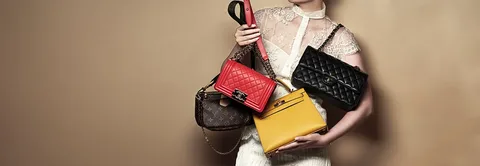In the ever-evolving world of fashion, a surprising shift has taken center stage: second hand luxury bags are no longer just a niche collector’s item — they’re now a mainstream fashion statement. The phrase “From Vintage to Vogue: The Rise of Second Hand Luxury Bags in 2025” captures this evolution perfectly, reflecting a global trend where sustainability, style, and savvy investment meet.
A New Era for Luxury: The Appeal of Pre-Owned Fashion
Luxury used to be synonymous with brand-new. But in 2025, that perception has dramatically changed. Today’s consumers — particularly Millennials and Gen Z — are prioritizing eco-conscious choices without compromising on elegance. As a result, second hand luxury bags are now seen not only as eco-friendly alternatives but also as valuable, timeless treasures.
High-end resale platforms like The RealReal, Vestiaire Collective, and Fashionphile have made it easier than ever to buy and sell authenticated designer bags. From Hermès Birkins to vintage Chanel flap bags, the pre-loved luxury market is thriving, supported by advances in digital authentication and consumer trust.
The Investment Value Behind the Trend
One key reason behind the rise of second hand luxury bags in 2025 is their investment potential. Unlike fast fashion, luxury bags often appreciate in value — especially when they’re well-preserved and come from limited collections. Many fashion enthusiasts are now viewing these bags not only as accessories but as financial assets.
According to market research, the resale value of iconic bags has outpaced some traditional investment options. It’s no longer just about owning a piece of fashion history; it’s about making smart, stylish financial decisions.
The Circular Economy Meets High Fashion
The luxury industry has faced increasing pressure to reduce waste and embrace sustainability. The second hand market answers this call. From Vintage to Vogue: The Rise of Second Hand Luxury Bags in 2025 also reflects a broader cultural shift toward the circular economy — where reuse, recycling, and conscious consumption are the norm.
Brands like Gucci and Burberry are now exploring official resale channels, offering buy-back programs or partnering with resellers to ensure their products remain in circulation longer. This approach not only extends the lifecycle of luxury goods but also introduces their legacy to a new generation of consumers.
The Personal Touch: Storytelling Through Style
What sets second hand luxury bags apart is the unique story each piece tells. Unlike mass-produced accessories, these bags carry a sense of history and individuality. Shoppers are no longer just buying logos — they’re buying legacy.
From Vintage to Vogue: The Rise of Second Hand Luxury Bags in 2025 isn’t just about owning a designer item; it’s about choosing a piece that reflects one’s values, history, and aesthetic. This emotional connection to fashion is a powerful driving force behind the boom in luxury resale.
Conclusion: A Trend That’s Here to Stay
What once was seen as thrifting has now become trendsetting. With fashion giants embracing resale and consumers growing more conscious of their choices, second hand luxury bags have firmly cemented their place in the fashion mainstream.
As we look to the future, it’s clear that From Vintage to Vogue: The Rise of Second Hand Luxury Bags in 2025 isn’t just a moment — it’s a movement. And it’s redefining what luxury truly means in a modern, mindful world.

